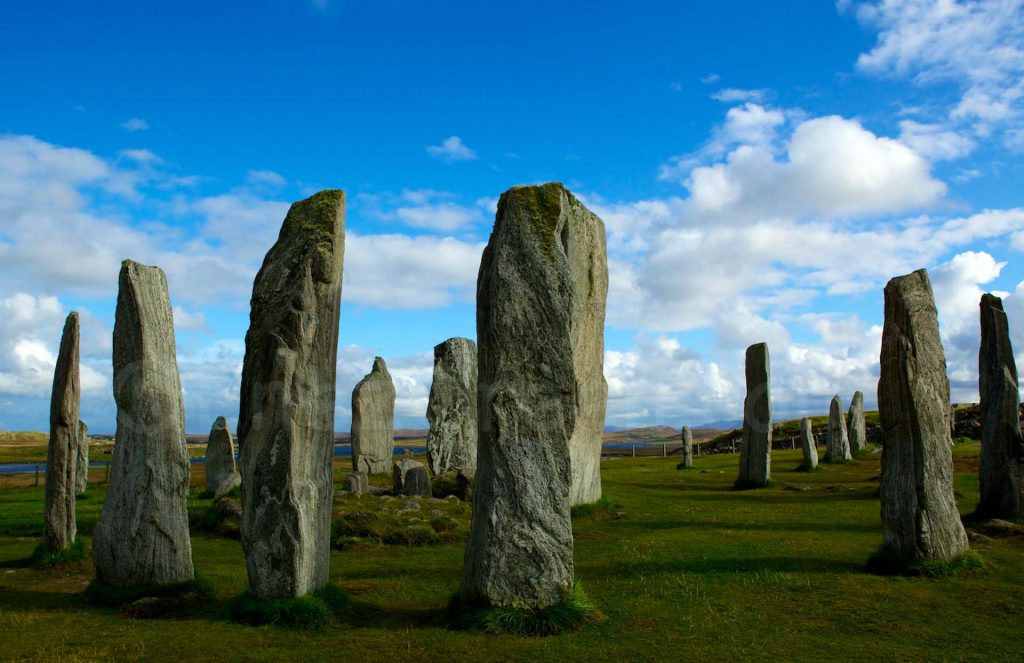The most famous megalithic site in Scotland
The site, which dates from the Stone Age, comprises some 50 stones including 13 arranged in a circle, at the centre of which is a large megalith and a more recently built tomb chamber.
The stones are raised on a bed of peat and rise up to 4 m high, adding to the enigmatic ambiance of the place. Various line-ups start from the circle towards the cardinal points. A double row of 19 stones resembles an 80m long avenue which sparks all sorts of irrational interpretations.
The origin of the megalithic site of Callanish
No discovery to date has shed light on the reasons behind the construction of such a monument, not even to understand its intent. Is it a religious site or an astronomical observatory? The most widespread hypothesis establishes a link between the arrangement of the stones and the astral calendar.
For Alexander Thom, his stones form a calendar based on the position of the Moon. He suggests that the alignment of the stones, looking south, points to the midsummer full moon behind a distant mountain called Clisham.
Similarities with other European prehistoric sites
The line-up of the west part could hence point towards the rising sun at the two equinoxes. Similarities have been observed with other prehistoric sites in Europe such as the one in Carnac in Brittany, in the west of France. This is a logical comparison since we are already talking about megalithic civilisation regarding this very ancient period.
While visiting the site bathed in a unique and enigmatic ambiance, you will easily find the inspiration to make your own hypotheses. The harmony of the place, however, leads to think that the peoples who lived there were well organised and certainly prosperous. The climate was much milder 4,000 years ago and could have contributed to this balance. The excavations undertaken and the analysis of plant seeds have in fact uncovered the existence at the time of various tree species such as pines, therefore confirming this assumption regarding the climate.
The guide to prehistoric monuments in Scotland provides relevant answers to the various questions pertaining to the presence of these megaliths, cairns and circles of standing stones in the Hebrides Islands.



